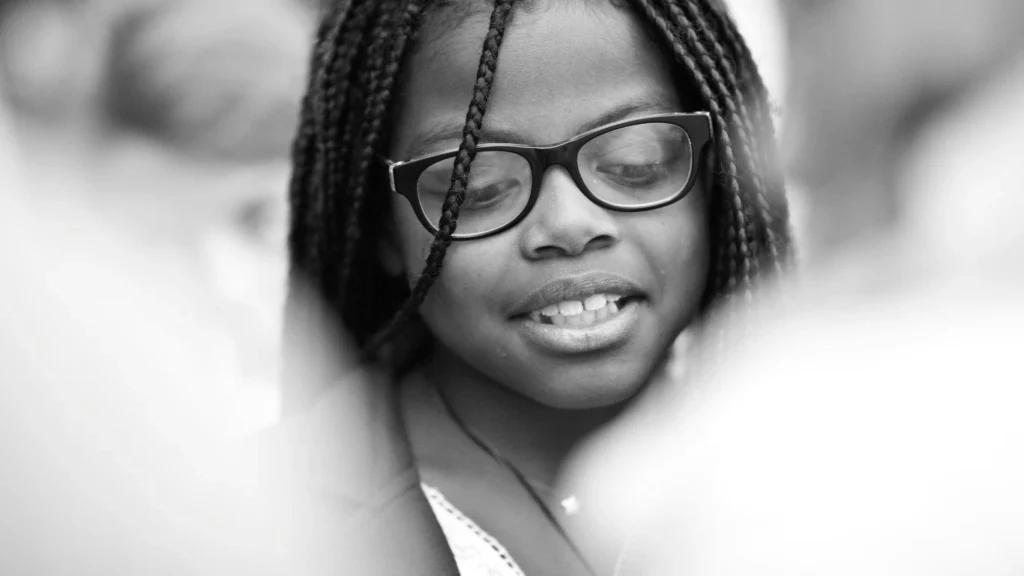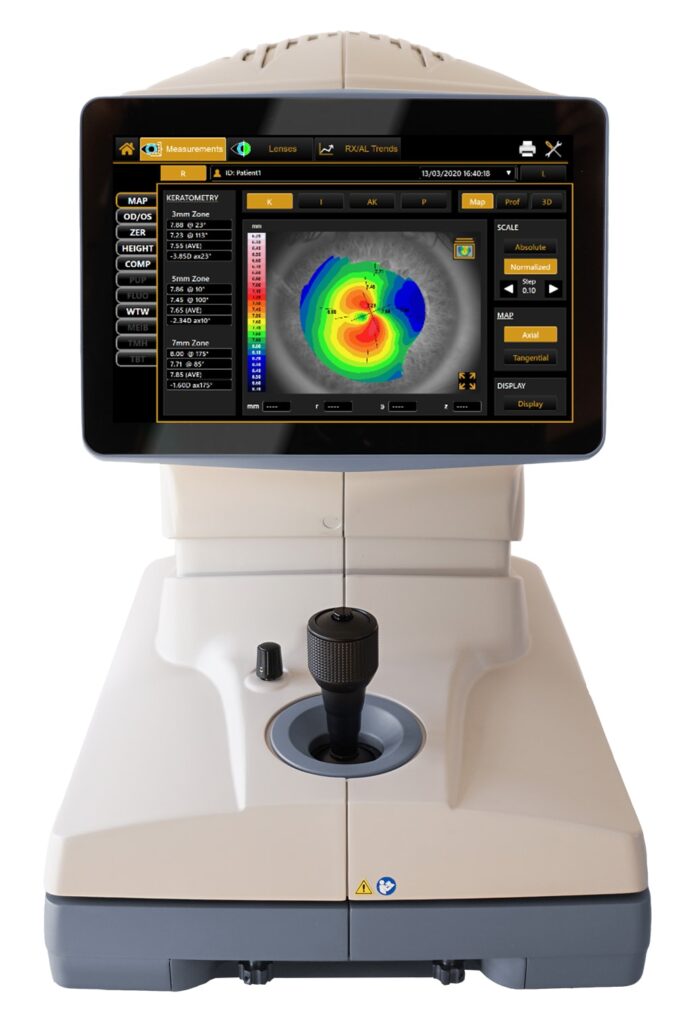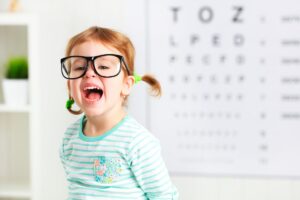Myopia Control for Kids in Edmonton – Diagnosis and Treatment

It’s an eye condition that could affect half the world’s population by 2050: myopia. Already, 30 per cent of Canadians have it! The most alarming fact about myopia is that it predominantly starts in childhood – and some pediatric cases go unnoticed and undiagnosed. Myopia in children can lead to more severe eye diseases later in life, even blindness, if left untreated.
The good news is that there’s an increasing amount of research suggesting that special glasses, contact lenses and eye drops can slow the progression of childhood myopia.
At Optometrists’ Clinic Inc. in Edmonton, we can diagnose, treat, & monitor myopia in your child by using our Topcon MYAH machine. This helps us determine the best way forward to help preserve and protect your child’s vision! Contact us at one of our clinics in the Edmonton area, Leduc or Westlock to book a pediatric eye exam for your child.
Our Myopia Management Program
The sooner myopia is detected and treated, the better. That’s why the Optometrists’ Clinic offers a myopia management program for your children.
Learn more about how our myopia management program can help your child see a clearer future.
Understanding Myopia Management
Myopia management consists of detecting and treating myopia in young children in order to proactively slow the progression of myopia. As children grow, so do their eyes, and the continuous stretching of the eyes not only worsens myopia but also increases the risks of serious eye diseases, including cataracts, myopic maculopathy, glaucoma, and retinal detachment.
Myopia Management focuses on detecting and treating nearsightedness at an early stage so that more serious complications can be avoided.
Treatment Options
To prevent the rapid development of myopia, special treatment options are offered for your child. These include:
- Myopia Control Soft Contact Lenses
- Myopia Control Glasses Lenses
- Specially Formulated Eye Drops
- Ortho-Keratology (Ortho-K) Rigid Contact Lenses
Treatment Success
Though results may vary depending on the patient and treatment method, many children experience a reduction of 50-60% in the progression of myopia through the years. Treatment will not reverse myopia, which is why it is important for children to have regular eye examinations from and early age (before Kindergarten).

What to Expect During Your Myopia Assessment
- Initial Assessment: During the initial assessment, your child will go through specific examinations that can provide more detailed information than regular exams. The objective is to evaluate risk factors and determine the best course of action to treat the condition.
- Follow-up Visits: To properly evaluate the progression of your child’s nearsightedness and the effectiveness of the treatment, follow-up visits are scheduled every 6 months. In some cases, additional visits may be required.
- During the Assessment: Apart from thorough eye examination, our specialists will also discuss with you and your child risk factors, current habits regarding vision care and treatment options suited for the patient.
Ask us anything
What is Myopia
Myopia, also known as nearsightedness or short-sightedness, is a common vision condition where distant objects appear blurry while close-up objects remain clear. Myopia occurs when the eyeball is too long or the cornea is too steep, preventing light from focusing correctly on the retina. Instead, light focuses in front of the retina, leading to blurred distance vision.
Advanced technology now allows eye care professionals to accurately measure the length of the eye and the curvature of the cornea, helping determine the most appropriate treatment for each individual.
What causes Myopia?
Myopia is caused by a combination of genetic and environmental factors. Children with one or both parents who are nearsighted are more likely to develop the condition. However, modern lifestyle habits have significantly contributed to the increasing prevalence of myopia worldwide.
Research by the Canadian Association of Optometrists has linked excessive screen time (computers, tablets, and smartphones) to a higher risk of developing myopia. Additionally, a lack of outdoor activity has been identified as a major contributing factor. Increased near work, such as reading and screen use, paired with reduced exposure to natural light, has led to a sharp rise in myopia cases among children and teenagers.
What makes Myopia worse?
Since children’s eyes grow rapidly, any vision issue that arises early can have a lasting impact. Unfortunately, myopia is developing at younger ages than ever before. Previously, it was more common in children around 12 to 13 years old, but today, it is frequently diagnosed in children as young as six.
Myopia is a progressive condition, meaning it tends to worsen over time if left unchecked. The most significant changes often occur between the ages of 6 and 18. Activities that require prolonged near-focus, such as reading, computer work, and excessive screen time, can accelerate myopia progression.
What is the Topcon MYAH machine?
The Topcon MYAH is a state-of-the-art diagnostic device used to support myopia management and dry eye assessment. It provides advanced measurements like axial length, corneal topography, and tear film analysis, allowing your optometrist to track eye development and customize treatment plans—especially for children with progressing myopia. While it doesn’t replace a full eye exam, it offers essential insights to guide more effective care.
How Does Myopia Affect Children and Teens?
If left untreated, myopia can impact a child’s academic performance, sports participation, and overall confidence. Blurry distance vision can make it difficult to see the board in class, follow along in sports, or recognize faces from afar.
Parents should look for signs of myopia in their children, including:
- Frequent eye rubbing
- Excessive blinking
- Squinting to see clearly
- Sitting too close to the TV or holding books very near
- Complaints of headaches from eye strain
Additionally, children with myopia are at a higher risk of developing serious eye diseases later in life, such as macular degeneration, glaucoma, cataracts, and retinal detachment. Because of these risks, early intervention is crucial. Myopia management not only improves vision but can also significantly reduce the chances of developing future eye complications.
Can Myopia Be Controlled or Prevented?
While myopia cannot be completely cured, there are proven ways to slow its progression.
Lifestyle Adjustments:
- Reduce screen time and prolonged near work
Spend at least 1.5 hours outdoors daily in natural light - Follow the 20-20-20 rule (every 20 minutes, take a 20-second break to look at something 20 feet away)
Therapeutic Options:
- Specialized eyeglasses and contact lenses designed for myopia control
- Daily low-dose atropine eye drops, which have been shown to slow myopia progression
What Are the Best Lenses for Myopia Control?
Several advanced lens technologies are available to slow the progression of myopia in children:
ZEISS MyoCare: Designed for age-specific myopia management, offering clear vision at all distances, comfort, and full UV protection. ZEISS provides a one-time prescription change within the first year for MyoCare and other ZEISS branded lenses.
ZEISS MyoVision: Specially developed to reduce eye elongation by altering peripheral vision signals, helping to slow down myopia progression.
Hoya MiYOSMART: Based on two years of clinical trials, these lenses have been shown to reduce myopia progression by up to 60%.
CooperVision MiSight: A daily disposable contact lens designed for children as young as 8 years old. Clinical studies confirm that MiSight lenses effectively slow the progression of nearsightedness over time.
At What Age Should Myopia Management Begin?
Early intervention is key to preventing severe myopia. Since myopia can progress rapidly in young children, optometrists recommend starting treatment as soon as a child is diagnosed. Ideally, myopia management should begin between ages 6 and 10, when the most significant changes in prescription typically occur.
Childhood Myopia Control for Kids in Edmonton
At Optometrists’ Clinic Inc., we provide complete eye care for adults and children. Our pediatric eye exams are essential for diagnosing conditions such as myopia early, giving children their best chance at protecting their vision. We offer several options for myopia control in children, including glasses, contact lenses and eye drops. Contact us at our Edmonton, Westlock and Leduc clinics and schedule an eye exam today to see if a myopia management program is right for your child.
Learn More About Myopia

How Your Child Can Benefit from a Myopia Management Program
When it comes to nearsightedness (myopia) treatment for children, parents typically think about rushing to an optometrist clinic to get their kids’ first pair of glasses. However, solely relying on

Can Myopia Be Reversed or Reduced in Children? Understanding Myopia Control
You might wonder: can myopia be reversed? Unfortunately, there’s no magic cure to undo myopia completely. However, there’s good news! We can effectively manage myopia and, in the case of

Warning Signs of Vision Problems in Young Children
Signs Your Child May Have Vision Problems and When to See an Optometrist It’s not always easy for children to recognize or communicate that they’re having trouble seeing. Because vision
Book your eye exam with The Optometrists' Clinic today!
We invite you to get in touch, so that we can support you & give you the tools and knowledge you need to care for or improve your vision!



